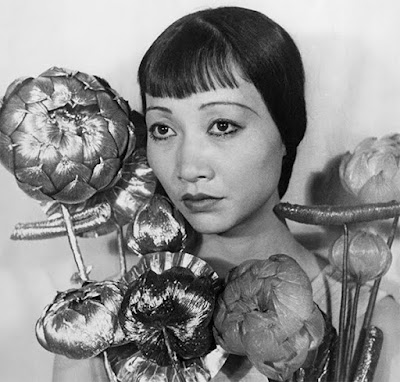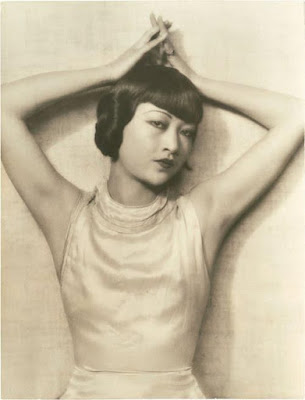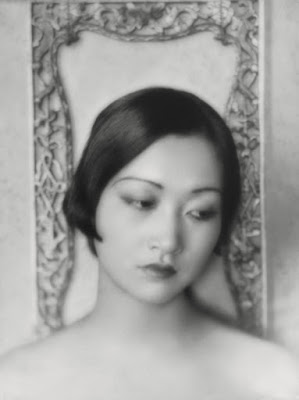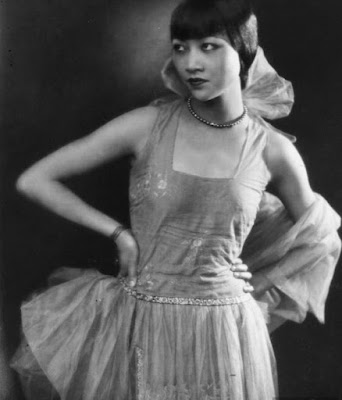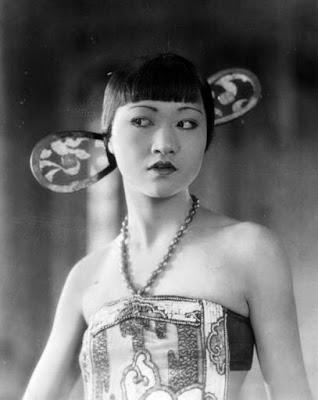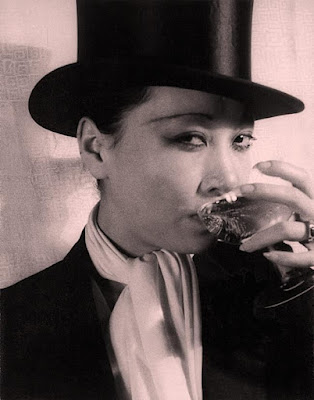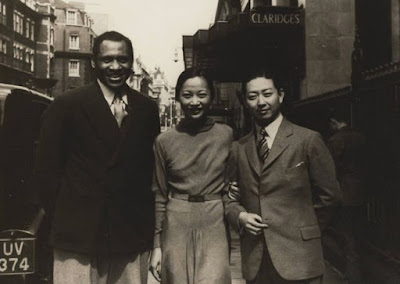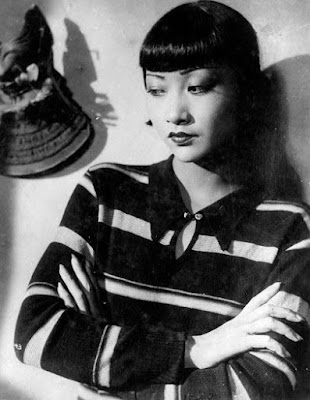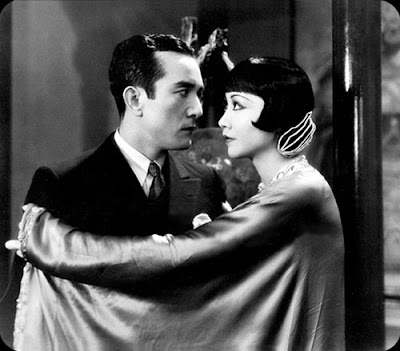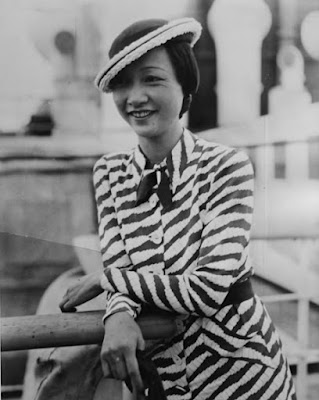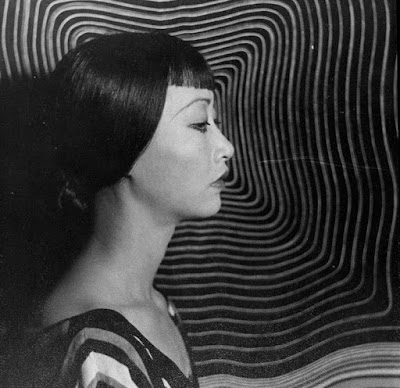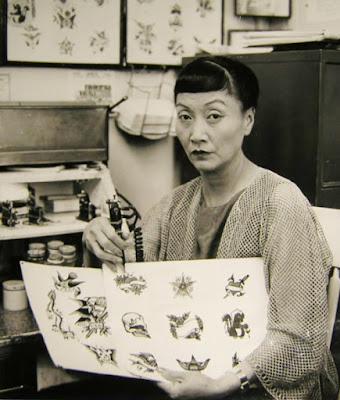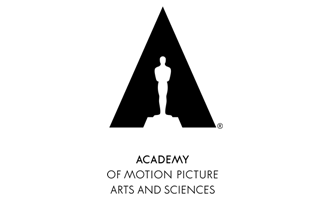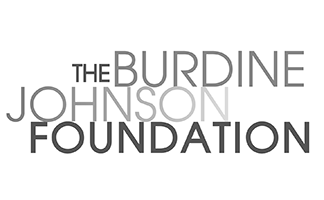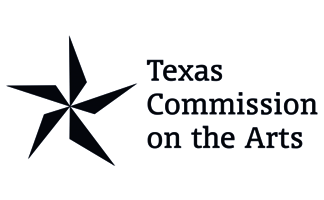Anna May Wong In Words & Images
“When I was about 17, a truck came booming down the street and the driver yelled for me to get out of the way. He called me “chink.” To my surprise I blazed back a remark equally insulting at him and he wilted. That was the turning of a corner for me.” (1934, Los Angeles Times)
“We were always thrilled when a motion picture company came to Chinatown to film scenes for a picture…I would worm my way through the crowd and get as close to the camera as I could. I’d stare and stare at those glamorous individuals, directors, cameramen, assistants, and actors in greasepaint, who had come into our section of town to make movies.
“(I decided) yes, I would become a movie star too! Having made up my mind to this, the next step was to watch motion pictures on the screen…” (1926, Pictures Magazine)
“And then I would rush home and do the scenes I had witnessed before a mirror. I would register contempt, shame, reproach, joy and anger. I would be the pure girl repulsing the evil suitor, the young mother pleading for her baby, the vampire luring her victim.
“One day, I was doing a big crying scene before my mirror when my mother walked into my room. She must have been amazed to see me with tears streaming down my face, clutching a bit of lingerie to my bosom but she said nothing. She was very considerate of one whom she must have thought at least peculiar. She left the room without a word.” (San Francisco Chronicle, 1928)
“The first period of her career involved her struggle as a pioneering Asian American screen actress whose talent and beauty became largely subsumed within Hollywood’s exotic and sexual imagery of a Madame Butterfly and a “Dragon Lady” in such films as ‘THE TOLL OF THE SEAS (1922) and THE THIEF OF BAGHDAD (1924). Disheartened by Hollywood’s treatment, in 1928 Wong left the U.S. for Europe to seek what would be a “second beginning” of her acting career. In Germany, France and England, she ascended to international stardom, appearing in a variety of lead roles on stage and in film productions fluently speaking all the original language dialogue.”(“Hollywood Asian”, 2006)
“Anna May Wong joined an out-migration of performers of color when she traveled abroad. From the 1920’s, American culture infused by the Italian Renaissance, expanded its horizons artistically as well as geographically. The resulting outflow of talent consisted primarily of African Americans, most notably artists like Josephine Baker and Paul Robeson, who similarly performed throughout Europe before more appreciative audiences. Within this transatlantic flow of talent, Wong distinguished herself with her unique status of “being oriental” and American at the same time, continually surpassing expectation with her modern flapper-style and wry sense of humor.” (“The China Mystique”, 2005)
Graham Russell Gao Hodges:
“(During the shooting of PICCADILLY) her impact on the public was immediate. People mobbed to her everywhere she went, making her forays into the city (London) difficult. English girls tinted their faces ivory with ochre color to get “the Wong complexion.” They cut their hair with bangs in the front to achieve the “Wong haircut.” Gorgeously embroidered coolie coats blossomed among the theater crowds in Piccadilly Circus.” – (“Anna May Wong: From Laundryman’s Daughter to Hollywood Legend”, 2004)
“Back in Hollywood, the biggest disappointment for Wong came when MGM offered her the Temptress role of second wife Lotus in the film adaptation of Pearl S. Buck’s The Good Earth (1931), instead of the lead role of O-lan. After losing the role of lifetime to Luise Rainer, Wong again deserted Hollywood to visit her ancestral homeland for the final time, to find out whether she was “playing a Chinese or merely giving an American interpretation of one.” (“Hollywood Asian”, 2006)
“The great tragedy of Wong’s life was that she sought to break free of her tradition – bound community and join the world of modernity that the cinema represented, on to find herself lashed by the very industry to constraining racist stereotypes.” (Guardian, 2004)
“How should we be, with a civilization that’s so many times older than that of the west? We have our own virtues. We have our rigid code of behavior, of honor. Why do they never show these on the screen? Why should we always scheme, rob, kill? I get so weary of it all, the scenarist’s concept of Chinese characters.” (quoted in “Asian America Through The Lens”, Jun Xing, 1998)
AFS Presents Anna May Wong in PICCADILLY (1929) with a live score by Ms. 45s on Thursday, June 16. Details here.

